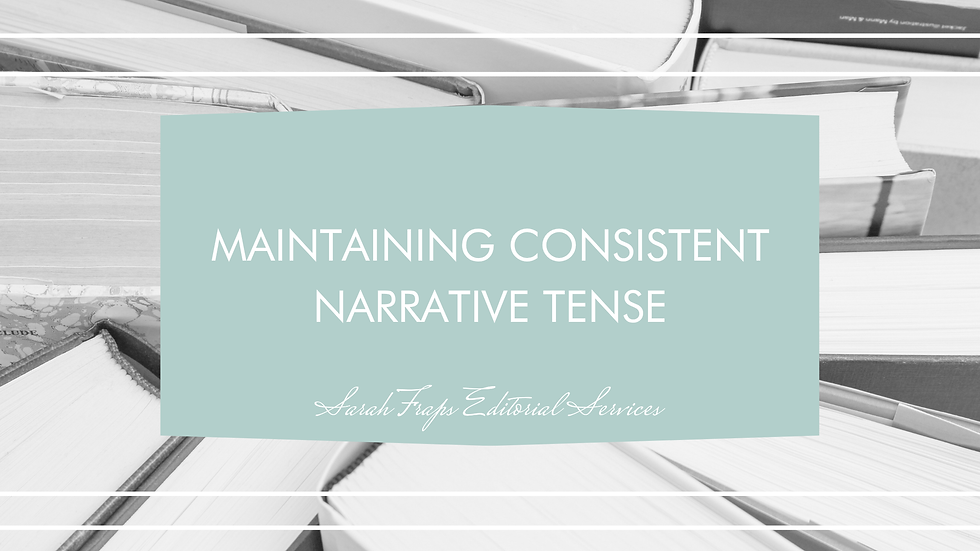Formatting dialogue in fiction
- Sarah Fraps

- Apr 27, 2023
- 3 min read
Updated: Apr 28, 2023
A grammar miniblog

Most writers are familiar with the basics of formatting dialogue in fiction such as in the following examples:
“I don’t believe you,” he said.
(He said, “I don’t believe you.”)
“Do you like ice cream?” she asked.
(She asked, “Do you like ice cream?”)
To add word variety, writers may choose to use a different verb than "say" or "ask" in a dialogue tag.
Dialogue tag
The dialogue tag should convey two pieces of information to a reader. First, who is speaking and second, how they are speaking. The first is pivotal, the second is (perhaps) optional.
“Say” and “ask” are likely the two most common dialogue tags, and many writers argue they are “the best” to use because readers are so used to seeing them that the reader’s eyes simply skate right over them, creating a smooth reading experience.
Other writers may argue, however, that using a variety of verbs as dialogue tags (murmur, mumble, yell, call, reply, inquire, etc.) helps create a more interesting read. But I’m not going to get into that here (though personally, I’m probably on Team Say/Ask).
Dialogue tags don’t need to be attached to every line of speech. If there is a conversation between two characters, and it’s clear that it’s just the two characters in the scene, then a tag may not be necessary for every change in speaker. Changes in speaker are also shown through the creation of a new paragraph. So the back-and-forth would look something like this:
“I thought you brought the bag!” Harry said.
Hilda replied, “No, I thought you had it."
“Why would I have brought it?"
Hilda shrugged. “How should I know?”
I did something extra in this back-and-forth conversation—I included an action beat, which showed what Hilda was doing during the scene and had the extra benefit of helping the reader identify the speaker in the final line.
Action beats
Action beats—description that shows what a character is doing before, during, or after their dialogue—can be made up of gestures, movements, and facial expressions. A lot of meaning can be conveyed through action beats, and in many ways, they act as an alternative to dialogue tags and can be formatted in a variety of ways.
She narrowed her eyes at him and said, “I don’t believe you.”
“I don’t believe you,” she said with narrowed eyes.
“I don’t believe you,” she said, crossing her arms.
“I don’t believe you,” she said as she took a step back.
She frowned. “I don’t believe you.”
(“I don’t believe you.” She frowned.)
An action beat can be a dependent clause attached to the dialogue and set off by a comma or conjunction, or it can be a standalone sentence.
Interruptions in speech by a dialogue tag or action beat
In the above examples, the action came before, after, or was connected to the speech. However, dialogue tags and action beats can also interrupt speech, as in:
“I don’t,” she said, narrowing her eyes, “believe you.” (A dialogue tag interrupting speech is set off by commas.)
“I don’t”—she crossed her arms—”believe you.” (An action beat [note the absence of “said” or another verb] interrupting speech is set off by em dashes.)
Creating interruptions in speech can have a great effect on pacing and flow, so play around with the formatting of your dialogue and see what works best for the scene.
A final thought
Writers have many options when it comes to formatting speech in their writing. Every genre will have its norm, and every author will have their own style. Keep in mind that the point of dialogue tags and action beats is to engage the reader by immersing them more deeply in the scene. Formatting dialogue is therefore key to keeping readers engaged and the story moving forward.








Comments